(4 pm. – promoted by ek hornbeck)
Since the stolen election of 2000, a cyclonic lot of crazy stuff has been whirling above the surface that previously managed to stay largely submerged in public political consciousness. Among the eye-openers beyond Bush v. Gore were, of course, the 9/11 anomaly, the attacks on Afghanistan and Iraq, and the seemingly arbitrary and endless global war on terror more generally; the looming national security state and the steady erosion of Constitutional and international law; the general feeling that enlightenment has given way to endarkenment; free-ranging corporate malfeasance and immunity; the bursting of various financial bubbles resulting in a generalized, global economic implosion, resulting in turn in massive corporate bailouts and profits, ballooning deficits, joblessness and austerity measures for the masses; an increase in global civil unrest and pushback, including the Arab Spring, the Occupy movement, and anonymous cyber-resistance; rather massive ecological catastrophes and an increasingly alarming pace of numerous climate change indices, including Hurricane Katrina and multiple other extreme weather events; and such an abject failure of the media to report on these developments with any effort approaching due diligence that one not only suspects willful dereliction, but active collusion with various malefactors.
It’s no wonder that 99% of political dialogue is distracted and cannot focus on the major critical factors of our spiraling crises, which happen to be more inter-related than your average kissing cousins. Rather than getting deep into the weeds on any particular topic, it’s worthwhile to zoom out and look at the main populations of events and drivers of these spiraling crises as they are subsumed under a master narrative of carrying capacity, a subject that approaches the brink of taboo in political (but not biological) discussions, insofar as it challenges the main religious orthodoxy of our time, namely, unlimited growth. Let’s see if we can begin by accurately describing our situation in broad, simple strokes. Part 1 (this essay) aims to provide the relevant background narrative for subsequent discussion.
These first two graphs, which are virtually identical, show human energy use (top graph) and human population growth (bottom graph) over the past 12 thousands years or so. Several things should jump out immediately beyond their near identity. First, they are both wildly anomalous spikes in the historical record, one-time, vertical explosions of activity happening simultaneously. Before knowing anything else, the very shape of the functions are cause for serious doubts about the sustainability of these trajectories.
When plotted against one another during the explosive phase, the nearly perfect identity between energy use and human population is confirmed.
Because “behaviorally modern” humans have been around for at least 70,000 years, it would seem this sudden vertical trajectory did not happen because of some sudden evolutionary innovation of the past several hundred years. Rather, these two simultaneous trajectories are consistent with energy being perhaps “the” rate-limiting factor of reproductive success, and humans fell into the Mother Lode, leaving other large mammals in their proverbial dust.
Alternatively, it is possible that an accumulation of post-agricultural/post-division of labor and expertise cultural knowledge reached a critical mass whereby civilization (and population) suddenly bifurcated into an entirely new mode that would have happened independently of energy use. The arguments are not exclusive, but the key experiment would be to remove the energy (a “before-after-before” experiment) to see if the large-brained mammals could maintain anything resembling their current numbers and technological complexity in the absence of energy.
That natural experiment is, in fact, underway, and while the design is adventitious and imperfect, it should provide definitive results.
Energy is the coin of of the realm in the kingdom of life because energy does work. The benefits of ascending limb of energy use can be represented by another nearly perfect relationship, the monotonic increase in economic activity as a function of energy use:
I have looked at world economies as a function of energy use across 180-something nations, across massive ranges of energy use and GDP, and the same linear relationship holds across them all, except for fewer than a handful of war-torn nations like Afghanistan. The bottom line is that energy = work = economic activity.
It would be downright “un-biological” for any species to turn down a free lunch, but there are significant, if not fatal costs associated with our heedless exploitation of fossil fuels. The energy density of fossil fuels magnified our native abilities to exploit resources to an extent beyond the wildest dreams of kings, that is, by orders of magnitude, allowing us to erect a hugely complex and interdependent system of resource extraction and allocation that is precariously sprawling and cantilevered on cheap energy.
A few examples are emblematic of the depletion and exhaustion we have wreaked upon the planet in just a few short centuries, less than an eye-blink of geological time. As seems to be always the case, we picked the best, low-hanging fruit first, then used our massive one-time endowment of energy to use ever more intensive and expensive methods of extracting the harder to obtain fruits.
One of the impressive things about reading Moby Dick is Melville’s reportage on the sheer volume of whaling done during the wind-powered 1800’s, when humans nearly wiped out whales for good, primarily to obtain whale fat to light lamps. Capitalists like to point out how if it were not for the innovations of Standard Oil, e.g., kerosene, the oceans would be whale free, but that’s really cherry picking the data, since whales were nearly wiped out again in the early-mid 1900’s until quotas were established. In truth, the substitution of fossilized oil for blubber changed fishery dynamics much for the worse. While wind-powered fishing was damaging enough, oil-fueled fishing has virtually guaranteed the complete collapse of global fisheries by 2050.
Note that this study was dated 2003, so it’s likely now that 40% of fisheries species have been decimated. Also note, for the purposes of their study, these scientists used 1950 as their baseline, which is highly misleading, because as marine biologist Jeremy Jackson likes to remind his colleagues, humans have been negatively impacting the oceans for many centuries. Even two-hundred year old records show that landings per unit of “fishing power” have declined precipitously since the age of sailing, thus 1950 is hardly an accurate baseline from which to show declines. We don’t have a baseline, so we may be well beyond population decimations as currently estimated. Nevertheless, cheap energy and energy-dependent technology have allowed commercial fisherman to literally scrape the ocean bottoms clean compared to whatever shifting baselines scientists think we have. This is not to say that scientists are wrong, but rather to emphasize the likelihood of erring on the conservative side.
The decline in species is not restricted to those we actively hunt, either. Species extinctions as estimated by numerous evolutionary biologists more generally have achieved rates matching or exceeding the rates during five previous mass extinction events. The following chart is from E.O.Wilson:
The common dynamic of cleaning out the easily obtained resources and then picking the bones clean by leveraging the sheer cheapness of free-energy is evident is just about every extraction industry, from cleaning out oceans to clearing forests to blowing off mountaintops. The example below should excite the goldbugs, insofar as it shows that gold ore grade is hitting floor limits of extraction, thus making their barbarous relic even more precious.
Of course, the same is true for most other ores, and the generalized depletion curve looks something like this:
In the absence of cheap energy, it wouldn’t be economically feasible to extract and process such diminishing concentrations of ore, and the same principle holds for other diminishing returns. When cheap energy runs out, the other cupboards will be truly bare.
Naturally, the master resource that has made the human anomaly and its extractive mentality possible is also in terminal decline. George W. Bush put it succinctly in plain language anyone can understand, just before he launched in extremis two wars in the Middle East:
“What people need to hear loud and clear is that we’re running out of energy in America.”
-George W. Bush, May 2001
US oil production peaked in 1970, precisely according to the prediction of Hubbert and his famous depletion curve. The depletion curve is no longer Hubbert’s “theory,” as some still call it, but rather a basic empirical observation.
Similarly, the world oil production plateau began in about 2005, corresponding to the application of the Hubbert curve to global oil:
Here are the IEA projections for future energy liquids (adapted from Antonio Turiel at Ugo Bardi’s blog; legend added by myself):
Turiel adjusted these characteristically optimistic estimates for differing energy densities (i.e., “normalizing” energy per barrel), the increasing difficulties and costs of extraction (EROEI), more accurate rates of well decline, more reasonable pacing of new oil discoveries, resources likely to be “stranded” due to excessive costs, the poor substitutability of NGLs for petroleum in transportation, and excessively inflated estimates of shale oil recovery (see above). The resulting graph looks far less optimistic:
Indeed, as various analysts, from Matt Simmonds to Robert Hirsh, have pointed out previously, we have essentially arrived at the phase of terminal energy declines globally.
It’s worth taking a moment to note that the hot air blown about by peak oil denialists has been reaching epic proportions lately. The main objections are from the omnipresent techno-economic optimists for whom scarcity can only entail technological innovation and free-market magic. For them, the vehemence of denial is proportional to their incredulity of the facts: The end of oil would mean the end of everything, really, including debt-based capitalism. Their expectations, much like the rest of us, have been set in concrete by the recent human past of vast and rapid human progress, a religious-like fervor in the belief in growth, an inability to comprehend the fundamental antagonism between infinite growth and biophysical limits, and sheer incredulity at the idea it could all end. They’ll point to the “comparative advantage” of emerging markets, the tech innovations enabling the fracking boom, arctic and deep-water oil, and so on; but we have long since passed the global peak in oil discovery, used up the first half of easily obtained oil, and the hype surrounding fracking, for example, in the much-touted Maugeri report, has been weighed and found wanting by actual experts (e.g., here,here, and here. The recent environmental catastrophes of the Deep Horizon blow-out in the Gulf and the meltdowns as Fukushima provide convincing data points that the days of easy energy are over.
If you think the US is going to become “energy independent,” you should examine the numbers yourself, noting that the recent increase in “petroleum products” exports is primarily due to (a) our protracted economic slump which has curtailed domestic demand, and (b) the ongoing extraction boom (i.e., “The Reagan Play,” see next installment) that promises to be short-lived due to fracking well-depletion rates and the sheer economic infeasibility of sustained drilling.
Aside from extracting virtually every valuable resource to the point of exhaustion, the other aspect of hitting carrying capacity involves toxication of the environment from industrial-scale waste. Chief among the waste products of industrial society are the so-called global warming gases, or as they maybe should rather be called, “extinction gases,” insofar as they are now irreversibly altering the biophysical operating conditions of life as we know it.
The fact of global warming is beyond scientific dispute. Indeed, just about every former scenario envisioned is appearing too conservative to keep pace with facts on the ground, e.g., temperature anomalies, arctic melting, ocean acidification, glacial melting, and various extreme weather events.
Nevertheless, many climate change denialists are those who subscribe to often-justified deep-seated fears that the Bilderberger/Rockefeller elite are using issues such as “climate change” (in scare quotes) to somehow consolidate their domination of the New World Order, a topic on which there is much to say. However, in this case, the domination theory doesn’t make sense, because it defies the conflicts of interest involved, the “cui bono” of motive. In a nutshell, peak oil and climate change would be bad news for the business model of putative NWO conspiracists. Public acceptance of peak oil and climate change could threaten the very basis of their business model and modus operandi, which is why we rather see people like the Koch brothers copiously funding peak oil and climate change denial, as one would expect from a “cui bono” point of view. It is also why we see overt resource “smash and grabs,” such as the Iraq War, masked as “wars on terror,” noble efforts to protect freedom.
Some time ago, a friend sent me the 200 p. galley of the National Research Council’s, Climate and Social Stress: Implications for Security Analysis (Steinbruner, Stern, Jo, Eds.). The details of the report suggest inevitable and non-linear climate events will lead to increasingly adverse outcomes: the loss of the cryosphere (polar, glacial, tundra), coastal flooding, intensification of weather (precipitation and desertification); the oceans aren’t emphasized, due to the “national security mind-set” of the report, which instead emphasizes human terrestrial activity; water and food availability, famine, mass migration, plague, various types of social collapse. Et CETerAh-Ah-Ah! In addition, the report focuses on shorter time frames (10-20 years) and smaller thermal increases than expected; there is not a great deal of talk about the year 2100, or 6 C + increases in temperature, because really, why be alarmist? What’s the point after 6 – 8 C+? Within their limited scope, they do not expect thermal positive feedback from a “methane burp” (oops!) within the next ten years!, although that statement is beyond the “scientific confidence” of assigning exact statistical probabilities. Finally, the report explicitly excludes discussions of climate impacts within the US, for reasons one can only guess.
All you need to know about the compilation beyond that is plainly acknowledged in the preface (bold mine):
Core features of the climate change situation are known with confidence. The greenhouse effect associated with the carbon dioxide molecule has been measured, as has the dwell time of that molecule and its concentration in the atmosphere. We also know that the rate at which carbon dioxide is currently being added to the atmosphere
substantially exceeds the natural rate that prevailed before the rise of human societies.
That means that a large and unprecedentedly rapid thermal impulse is being imparted to
the earth’s ecology that will have to be balanced in some fashion. We know beyond reasonable doubt that the consequences will be extensive. We do not, however, know the timing, magnitude, or character of those consequences with sufficient precision to make predictions that meet scientific standards of confidence.In principle the thermal impulse could be mitigated to a degree that would presumably preserve the current operating conditions of human societies, but the global effort required to do that is not being undertaken and cannot be presumed. As a practical matter, that means that significant burdens of adaptation will be imposed on all societies and that unusually severe climate perturbations will be encountered in some parts of the world over the next decade with an increasing frequency and severity thereafter. There is compelling reason to presume that specific failures of adaptation will occur with consequences more severe than any yet experienced, severe enough to compel more extensive international engagement than has yet been anticipated or organized.
This report has been prepared at the request of the U.S. intelligence community with these circumstances in mind. It summarizes what is currently known about the security effects of climate perturbations, admitting the inherent complexities and the very considerable uncertainties involved. But under the presumption that these effects will be of increasing significance, it outlines the monitoring activities that the intelligence community should be developing in support of improved anticipation, more effective prevention efforts, and more decisive emergency reaction when that becomes necessary.
This is about as stark an admission (by proxy) that the US government plans to avoid curbing greenhouse gases as you are likely to get. Instead, The US appears to be subordinating the issue of climate change beneath the umbrella of national security, with an emphasis on “adapting” to climate change, reacting to it better, rather than mitigating climate change. To put it another way, the US government views mass extinction as “a national security issue” and “an intelligence problem.”
It has been speculated that all mass extinction events (The Big Five, so far) have been associated with some sort of climate change, e.g., due to vulcanism, asteroid impact, etc. The most recent mass extinction event resulting in the mass die-off of many species, including most of Dinosauria, made room for the evolution of small placental mammals that ultimately gave rise to hominids, anatomically modern humans 200,000 years ago, and “behaviorally modern” humans about 70,000 years ago.
Put simply, humans have been so “successful” as a species, almost exclusively in the final paragraphs of geological time, that our presence amounts to the geophysical forces that have shaped the ages of the Earth, and we are not only changing Earth in terms of habitat destruction and resource over-extraction, among other things, but in terms of changing the basic chemistry of life. A non-trivial percentage of humans will blithely applaud this fact, and ask for more funding, because the extinction of wild-type salmon is an investment opportunity in transgenic salmon.
More sober scientists are currently debating whether to declare the end of the Holocene (the most recent inter-glacial warming), and the beginning of the Anthropocene (the age of Man), e.g., whether to place it at the rise of agriculture (ca 10,000 years ago, thus replacing the Holocene) or at the beginning of fossil fuel use and the Industrial Revolution, and what stratigraphic markers to use, e.g., layers of highly radioactive soil from atomic testing, soot, oil spills, or the stretch of pavement from Long Beach to the San Gabriel mountains, Mexico City, and other etchings of human civilization, but the stratigraphy issue more or less a technicality, pretty much “in the bag,” one way or another. What’s really needed to Humpty Dumpty the more conservative fence-sitters is a mass extinction event that would really put a lock on the nomination. Sadly, we humans would have to die in order to get into the Hall of Fame.
Current extinction rates are way above background, or baseline rates, so high as to rival or exceed the rates of extinction during the previous “Big Five,” that also happened to be associated with climate change. Further, it appears that our climate change models cannot keep up with the pace and acceleration of current climate change; 2 degrees C, the original thermal target, has been repeatedly superceded by predictions of 4, 6, and even 8 degrees C; a totally devastating game-changer; indeed, the feedback loops and non-linearities puts the timing, speed, and magnitude climate change beyond confidence. In light of recent non-advances and regressions in climate agreements, and given the economic debacle, no progress on climate is foreseeable; indeed, governments, especially the US appear resigned to deal with it as a national security issue at best. Thus, a sixth mass extinction event due to runaway climate change is unlikely to be averted.
As Johnny A once demurred in his gravelly Dorchester accent after I complimented him on his lovely instrumental rendition of Witchita Lineman, “it’s hahd to butcha a classic!”
I’m ending this Part 1 backgrounder here. Part 2 will approach the same situation from another tack.

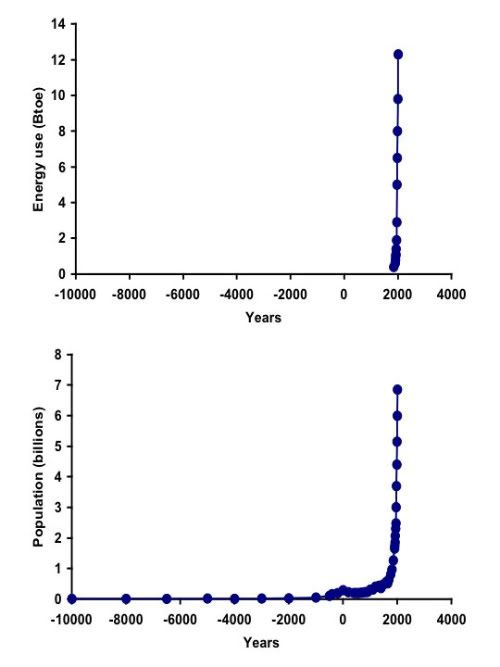
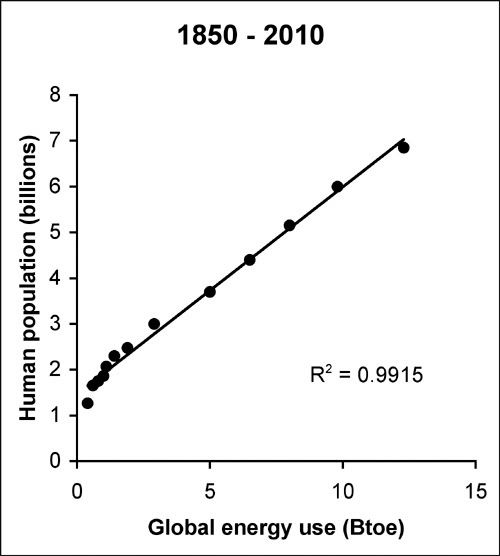
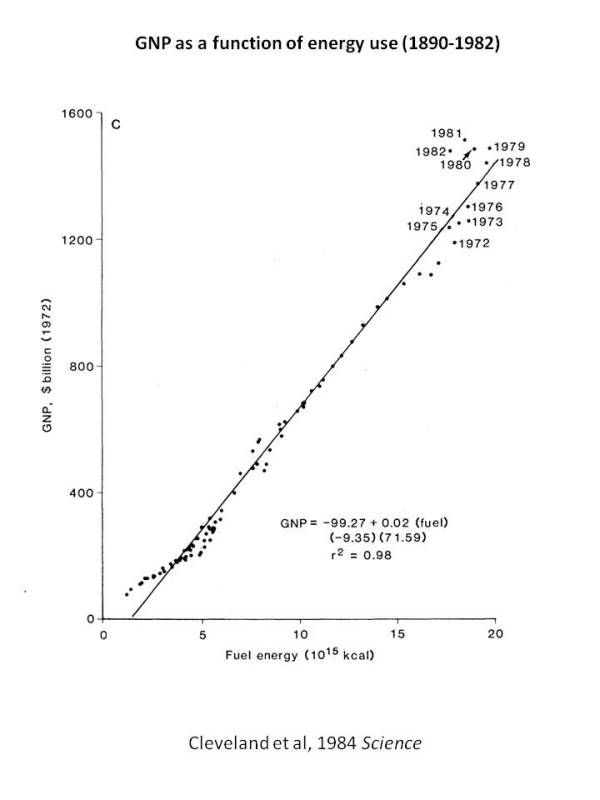


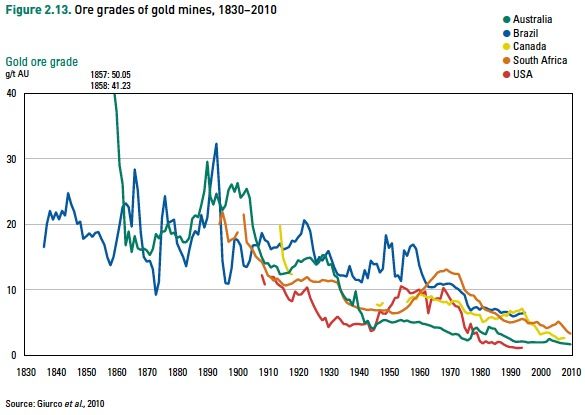
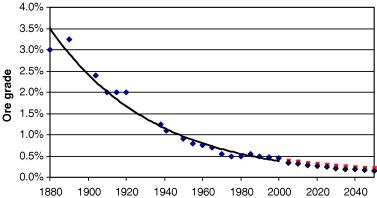
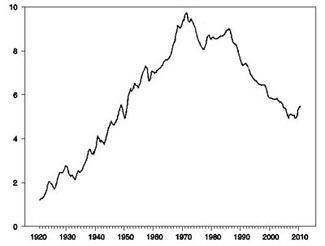
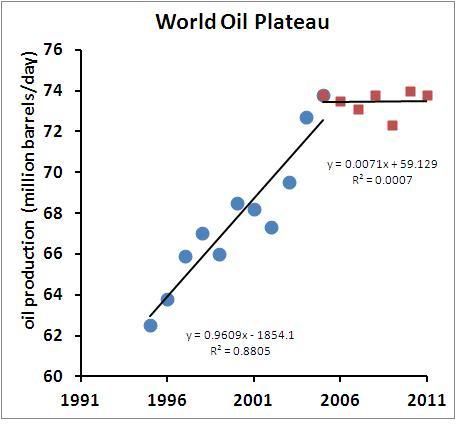

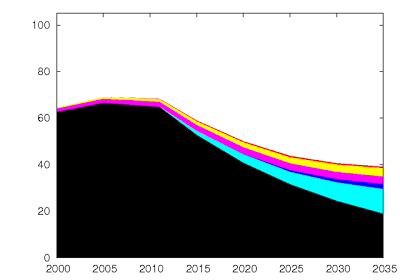
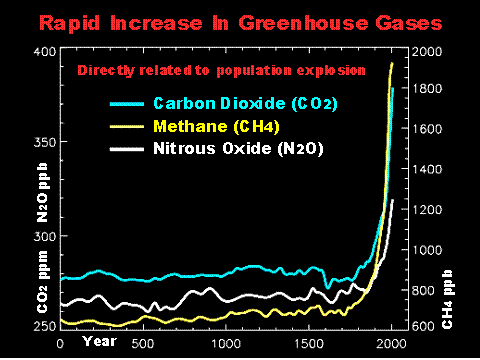
7 comments
Skip to comment form
Author
The Darwin Awards:
The Holocene Epoch Presentation.
And the winner is:
Post award show interview:
Fourth Horseman: To what do you attribute to your success in winning this award?
Mankind: Intelligence and opposable thumbs.
Brunnhilde has mounted Grane and is approaching the flames. And we sit on our hands.
Also this: The Oil We Eat
Testify brother!
Epic essay, CF, thanks.
Thanks for bringing up important stuff here–I’ve despaired of even visiting here–it seems often like nothing much is being said that is worth reading.
Really what we are seeing here is a unique event in human history that demands that human society must make a quantum leap into some post-human structure. By “post-human” I mean we need to become a new species not that we will all die off–although that is possible.
The most dramatic thing I know is not the information you have presented–which clearly points us to have to think about how we live and realize we are really really fucked. The dramatic thing is that we have the means, the technology and science that can mitigate the disasters that will come and, even more important, provide the impetus to become that new species that we must become.
There are people like Ray Kurzweil who talk about the Singularity (the time when machine intelligence, growing exponentially, will move far beyond us) that this new humanity will be cyborgs. I think that path is even worse than the disaster we will be facing because it means that we will be defined as mechanical and the mechanical is only a small part of who we are. There are aspects of being human that we have repressed but we can rediscover through using machine intelligence as a platform, a tool, not an end. Kurzweil and others of his ilk who, in large part, run Google and are in the highest levels of IT culture do not like bodies and do not like the natural world nor do they have a good understanding of that world.
Whether we become machines or fully human and closer to the angels depends on the notion that we are all connected not just as people but with the natural world–that consciousness in itself would be enough to stop and reverse the trends you have outlined.
We are obsessed with “brute-force” technology rather than elegant engineering that could decreases our carbon footprint drastically. The stuff we do we don’t need to do–we do it because our society is organized around values of waste and excess. If we changed those values our future would be very bright–why do I say this? Look at the amazing changes we have seen in just a few decades–human brilliance can solve our problems if it becomes fashionable. Yep, it’s all about about fashion in the end.